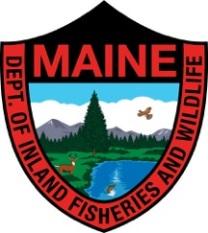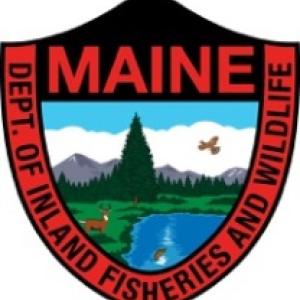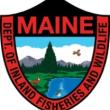Bear season starts Monday, youth bear hunting day is Saturday
AUGUSTA — Maine’s bear season begins on Monday, August 26 throughout the state of Maine, and youth hunters get their own day this Saturday, August 24.
“The abundance of natural foods on the landscape has the greatest influence on hunting success and the physical condition of the bears.” said Randy Cross, bear field crew leader for the Maine Department of Inland Fisheries and Wildlife, in a news release. “A cool wet spring like we experienced generally bodes well for bear foods, and more natural food results in fewer bears visiting bait sites and a lower number of bears harvested.”
Maine’s black bear population is closely monitored by Department biologists through one of the most extensive, longest-running biological studies in the U.S., according to the release. The study began in 1975 and continues today. Over nearly 40 years, Department biologists have captured and tracked over 3,000 bears to determine the health and condition of Maine’s bears and estimate how many cubs are born each year.
“Over those forty years, it’s very clear that during years with excellent natural food production of nuts and berries, bears are more reluctant to visit bait sites,” said Cross. “The good news for hunters is that bears will be actively foraging much later in the season than last year since late season foods such as beechnuts and acorns will keep bears out of their dens. This is good news for deer hunters that would like to harvest a bear during deer season and hunters who hunt in October.”
Maine’s bear season is divided into three segments, as hunters can hunt with bait from August 26 to September 21, hunters can hunt with dogs from September 9 to November 1, and hunters can still hunt or stalk bear from August 26 to November 30. Maine has one of the longest bear seasons in the country since Maine has one of the largest bear population estimated at over 36,000 animals. In addition to a season that starts in August and ends after Thanksgiving, Maine allows hunters to take two bears, one by hunting and one by trapping.
In 2018, hunters harvested 3,314 bears; 2017, 2,897 bears during the three-month season and In 2016, numbers were similar with hunters taking 2,859 bears.
Even with the lengthy bear season, only about 25% of all bear hunters are successful. By contrast, 76% of moose hunters were successful last year, turkey hunters enjoy success rates between 30-35% and deer hunters in Maine are successful 14-18% of the time.
Young hunters will once again get their own day on Saturday, August 24. Youth hunters who have a junior hunting license can hunt bear with a firearm, bow, or crossbow on this day. Youth hunters may hunt bear with the use of bait, or still hunt; however the use of dogs during youth hunting day is prohibited.
For more information on youth day, visit: www.maine.gov/ifw/hunting-trapping/hunting-laws/junior-hunters.html#youthhuntdays.
Over a span of 40 years, Maine’s bear study has shown that not only does the availability of natural foods drive bear cub survival and bear birth rates, but it also directly influences when bears den for the winter, as well as hunter success rates. In poor natural food years, hunter success is higher than in years when natural food is abundant.
Successful bear hunters are reminded that it is mandatory to submit a tooth from their bear when registering. Tagging agents will provide envelopes and instructions to hunters as to how to remove the tooth. Biologists age the tooth, and the biological data collected help biologists adjust season lengths and bag limits for bears. In August, hunters can learn the age of the bear they harvested the previous season by visiting www.maine.gov/ifw/hunting-trapping/harvest-information.html.
Hunters and trappers must have a bear permit in addition to a big game hunting or trapping license to harvest a bear in Maine. However, during the deer firearm season, resident hunters can harvest a bear without a bear permit. Bear hunting is most popular and bear populations are the densest in the northern and downeast regions of the state.
Event Date
Address
United States
























